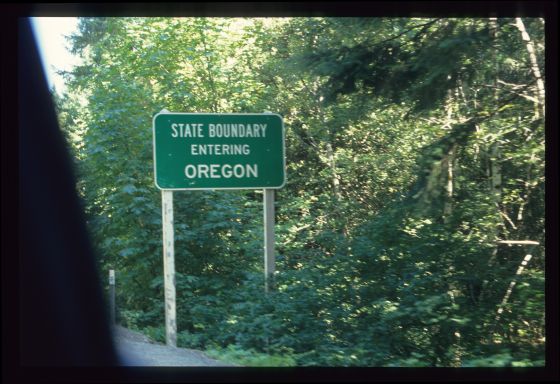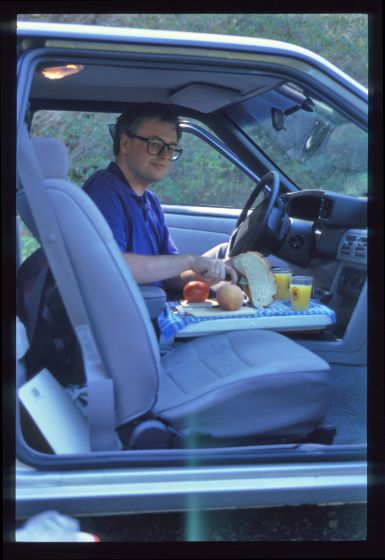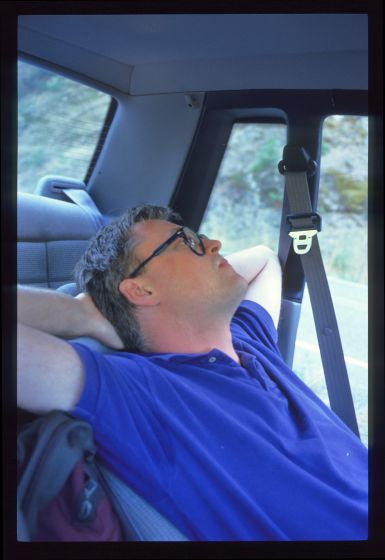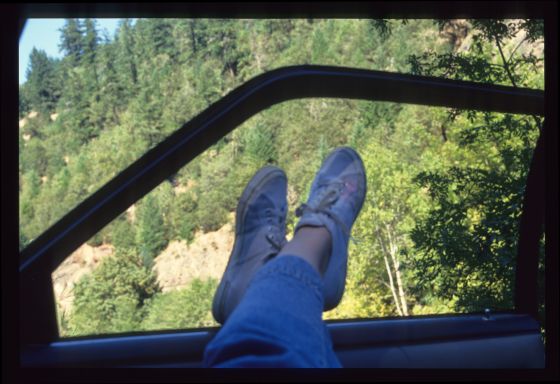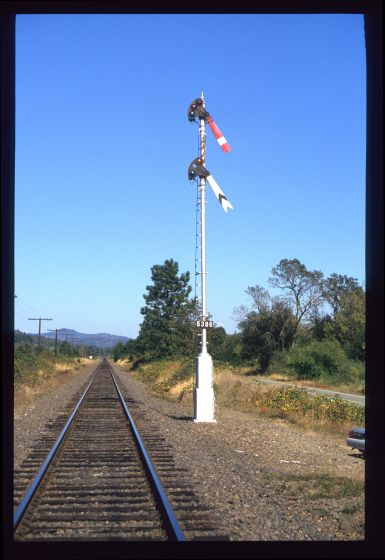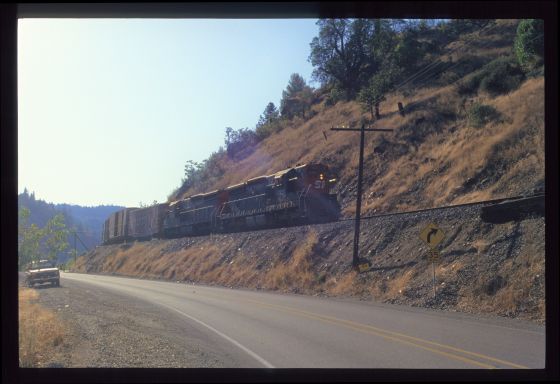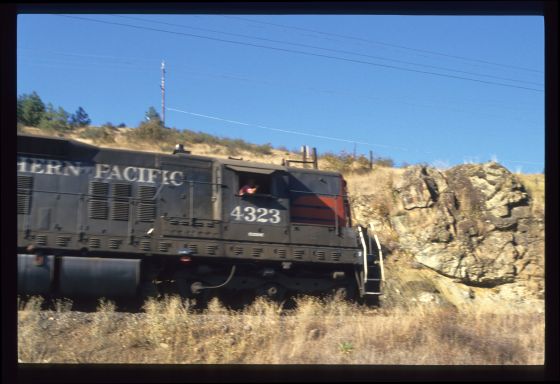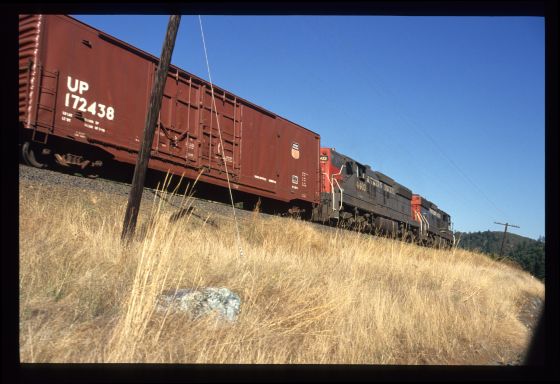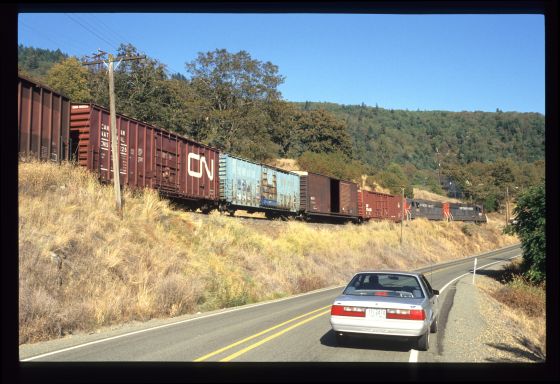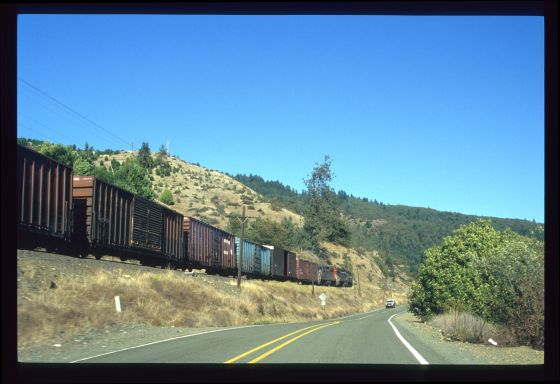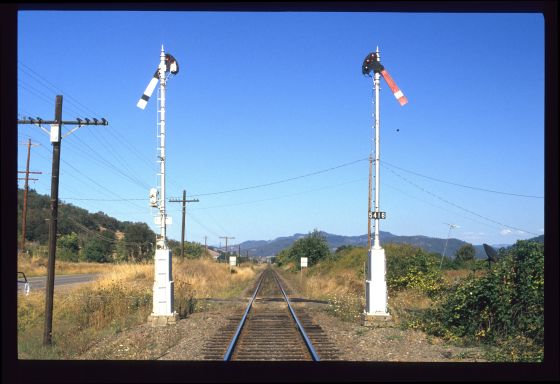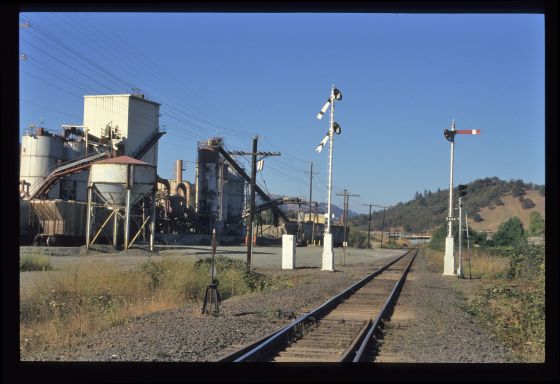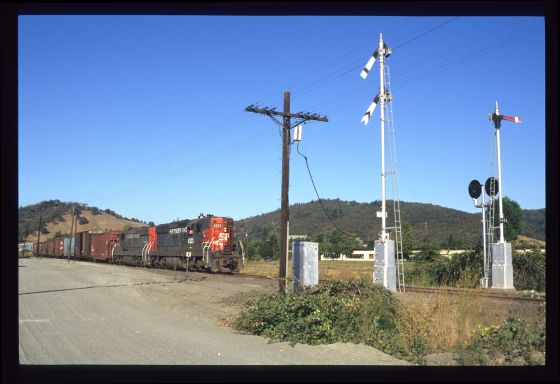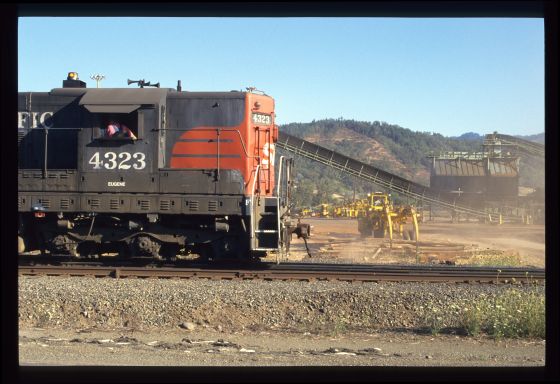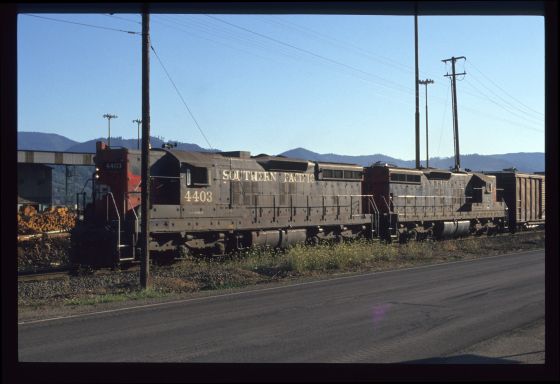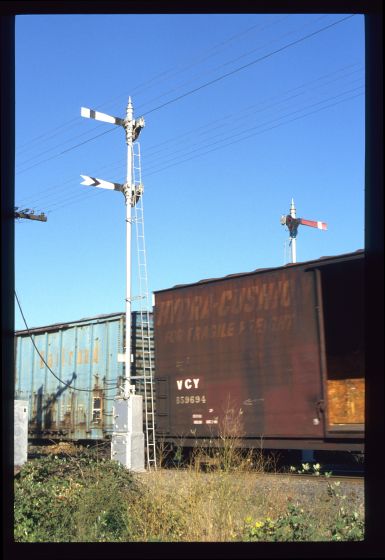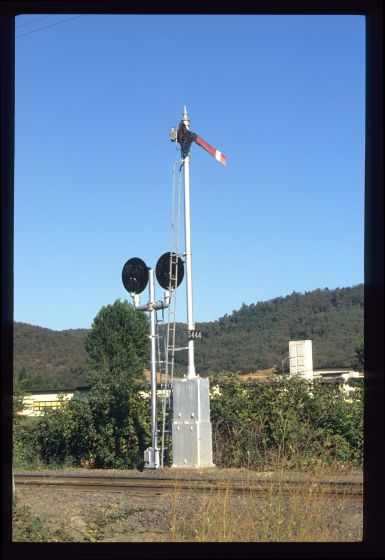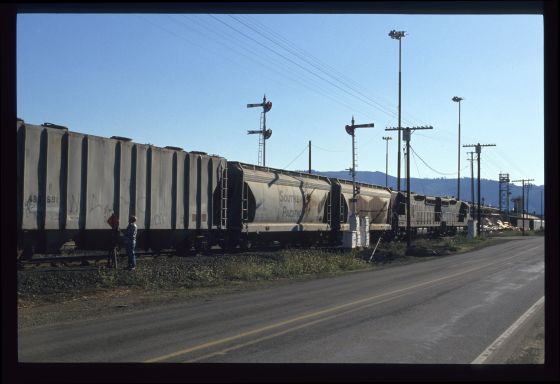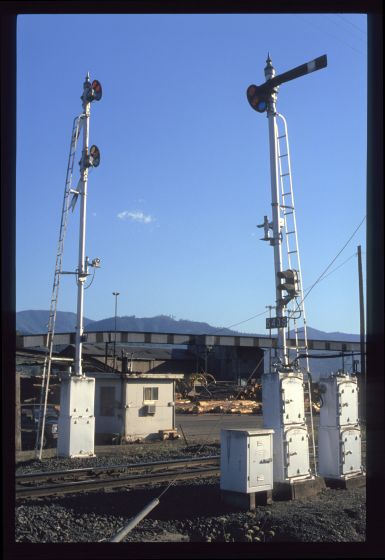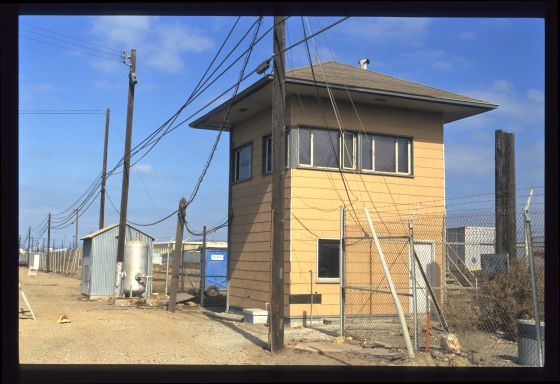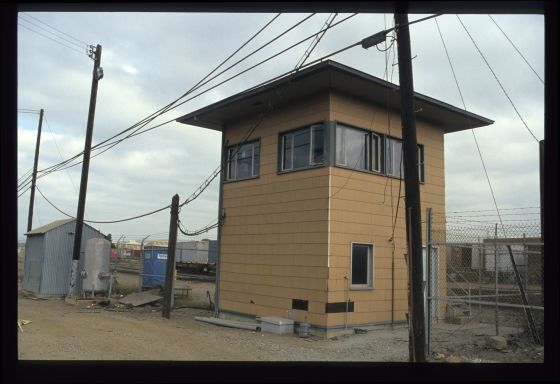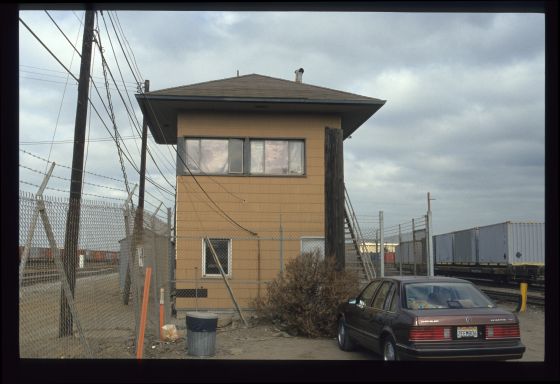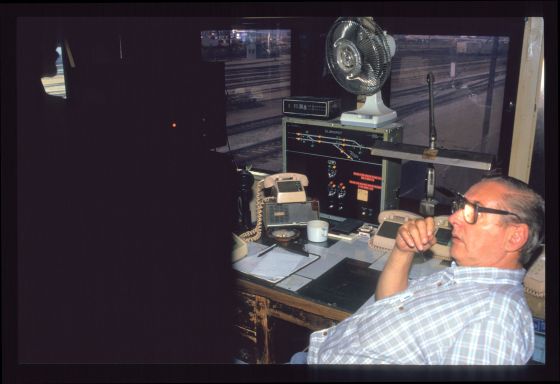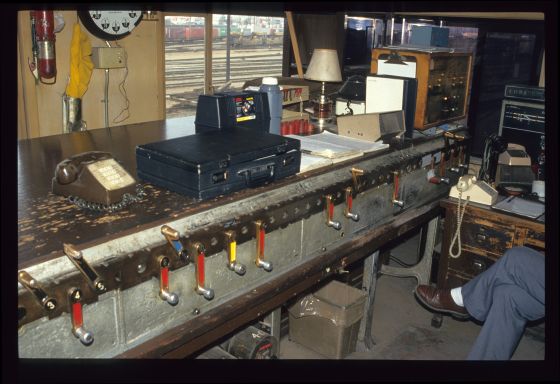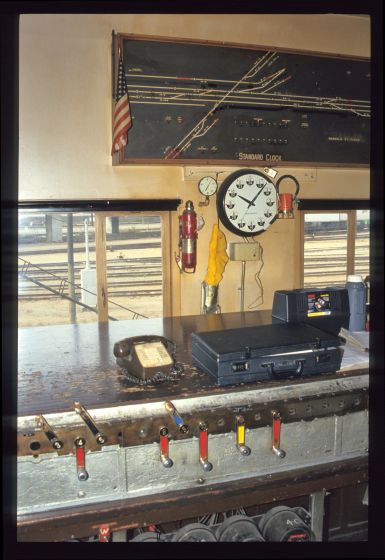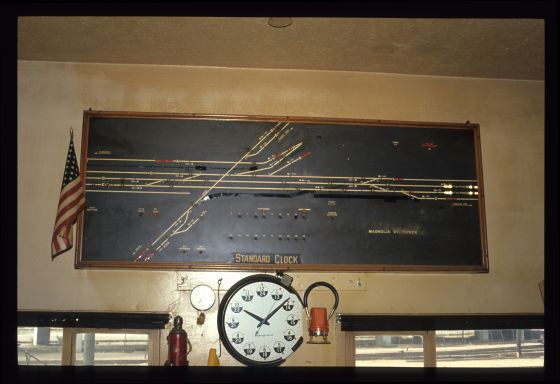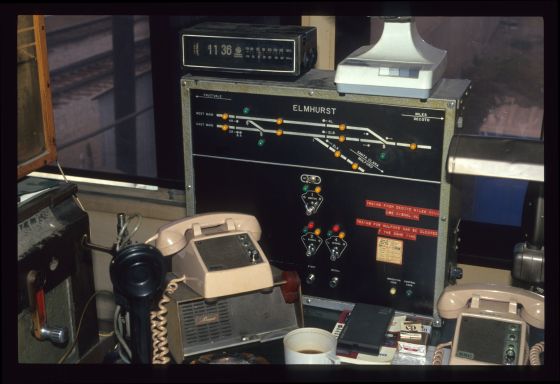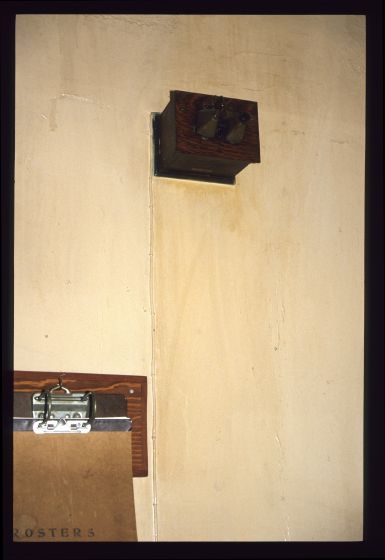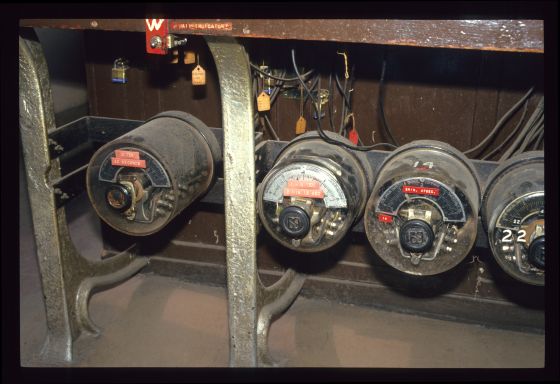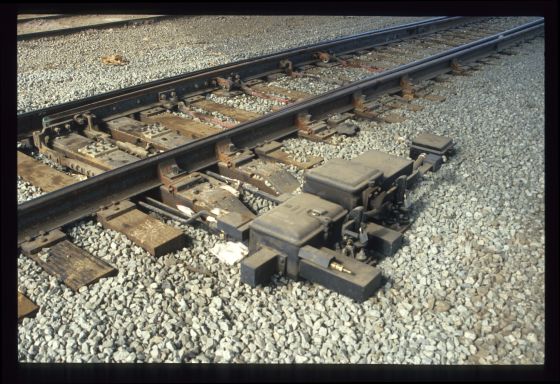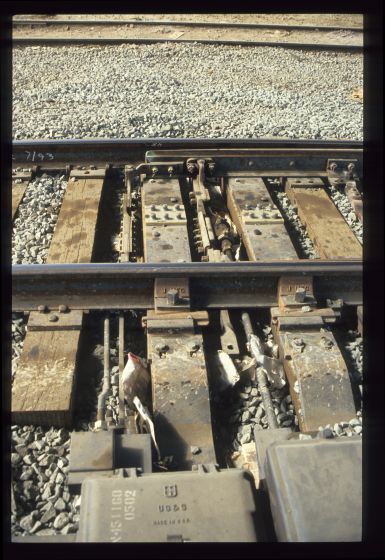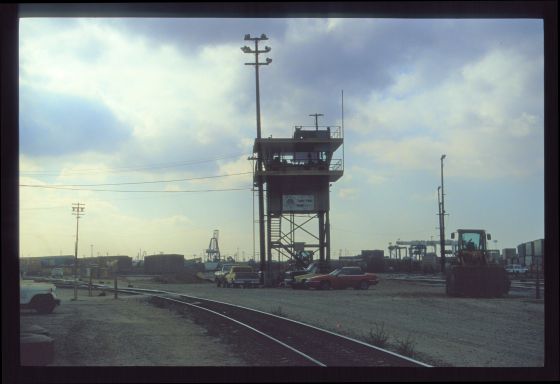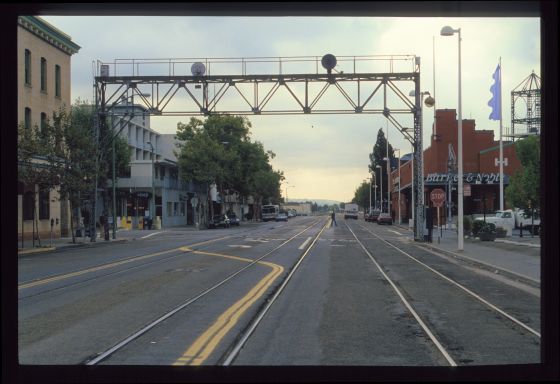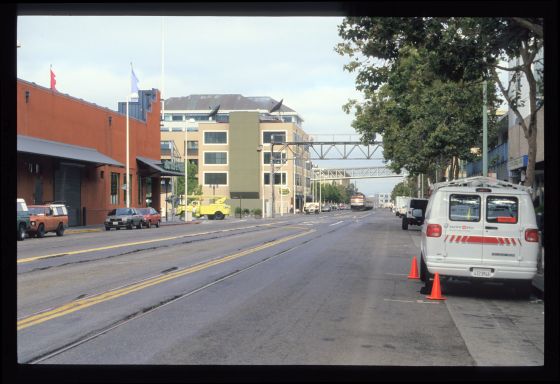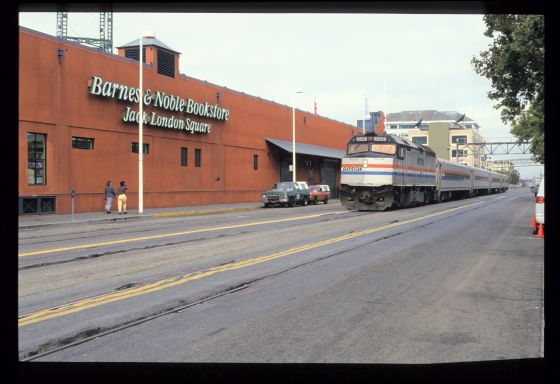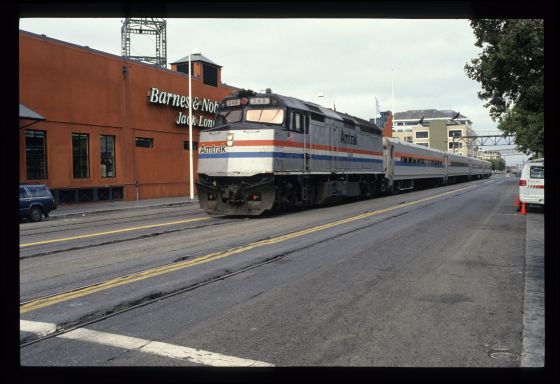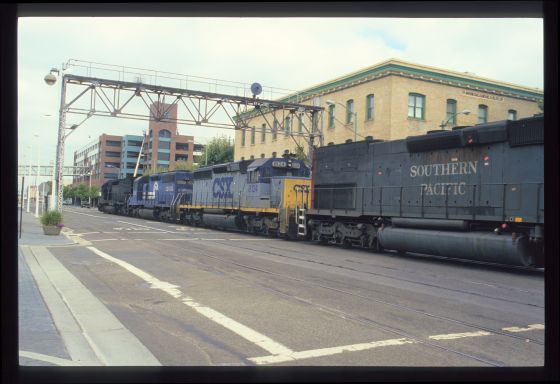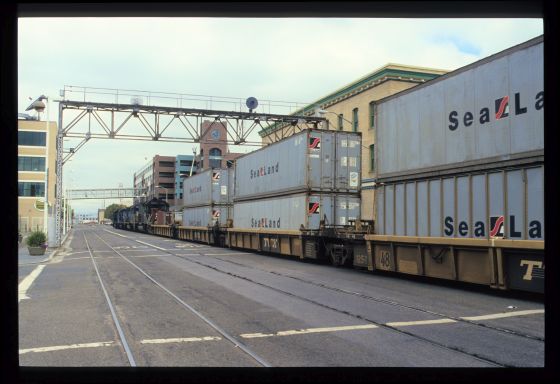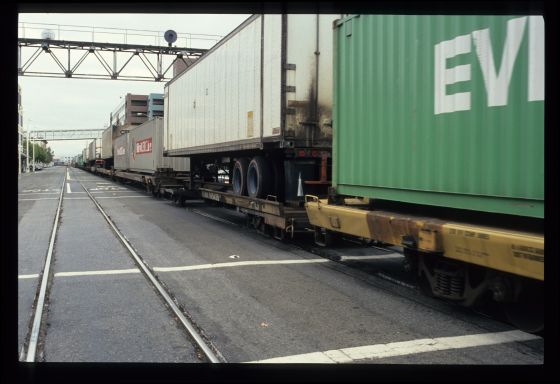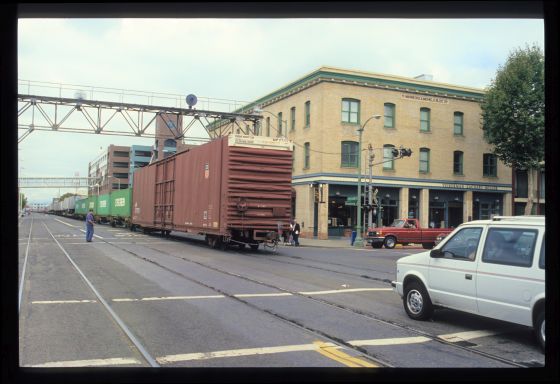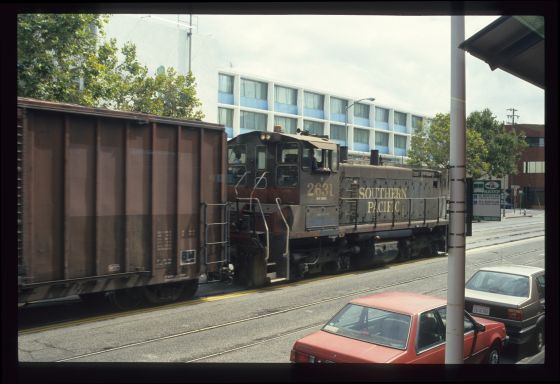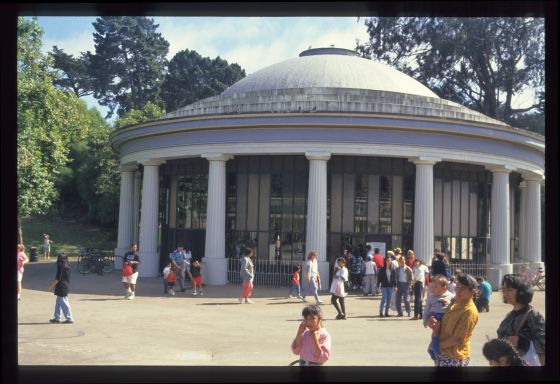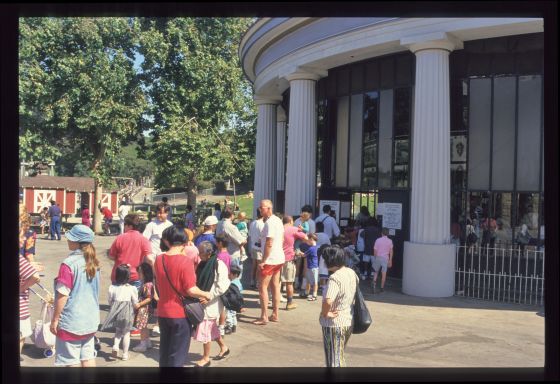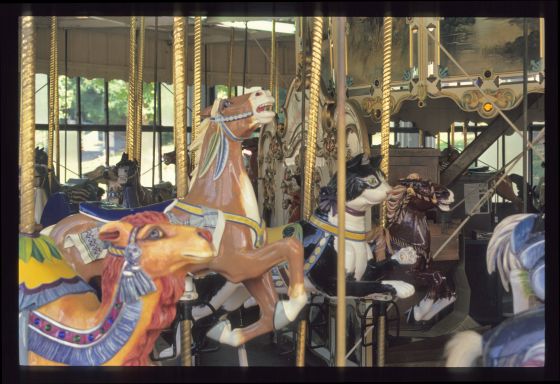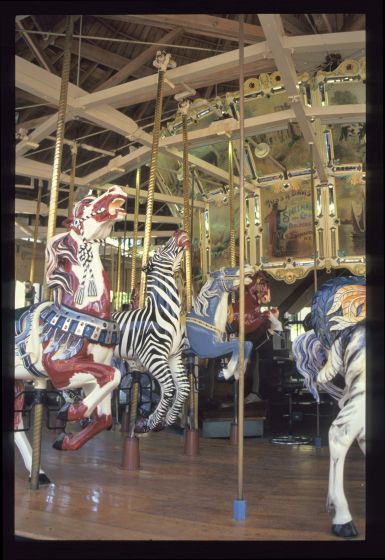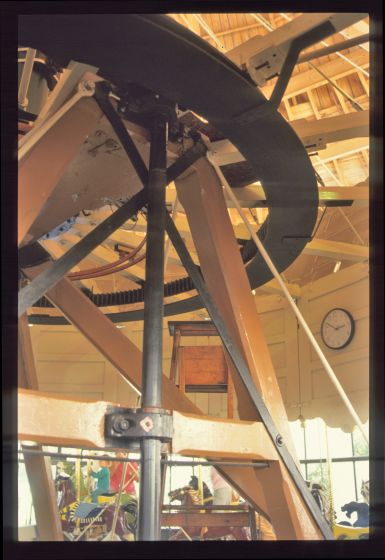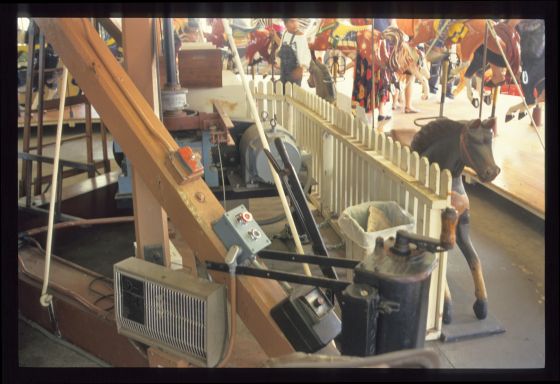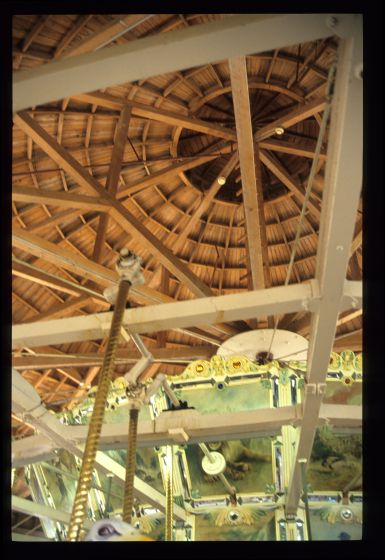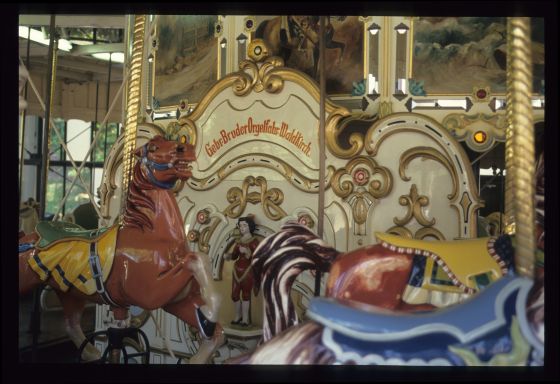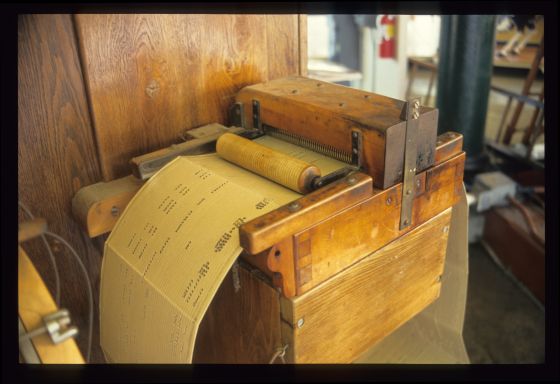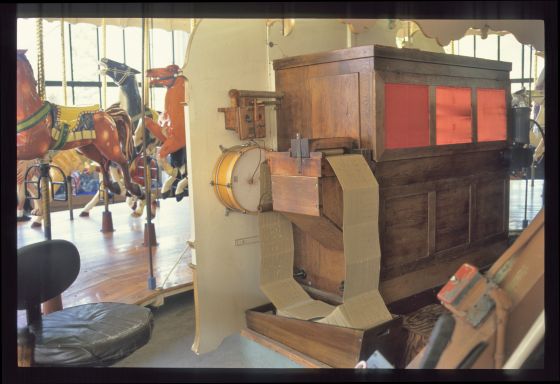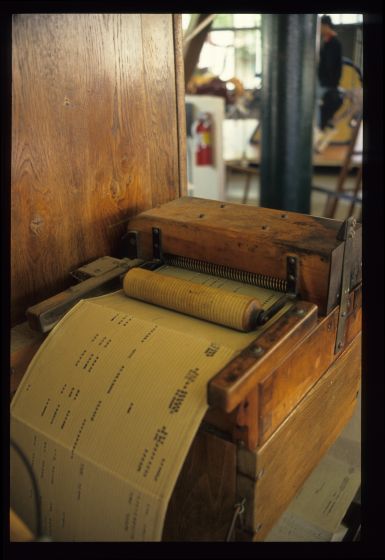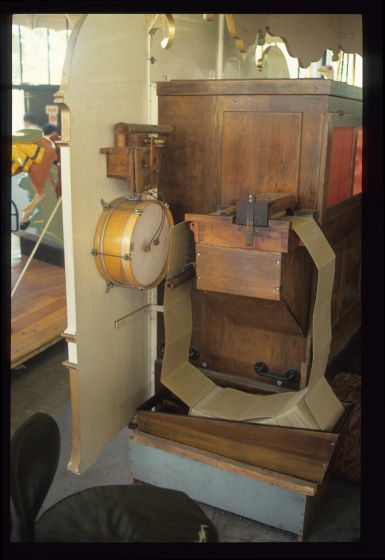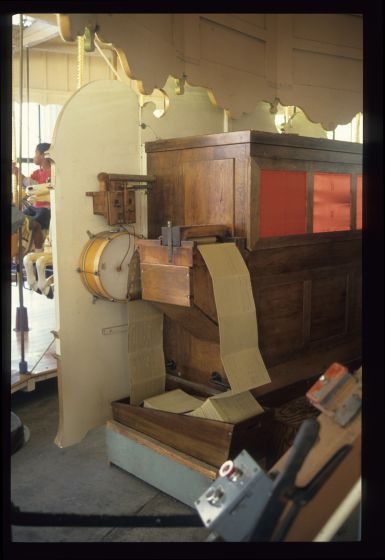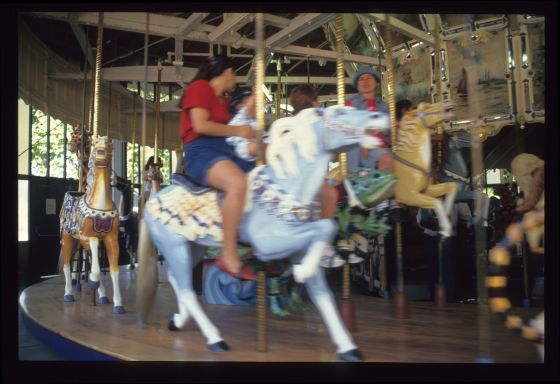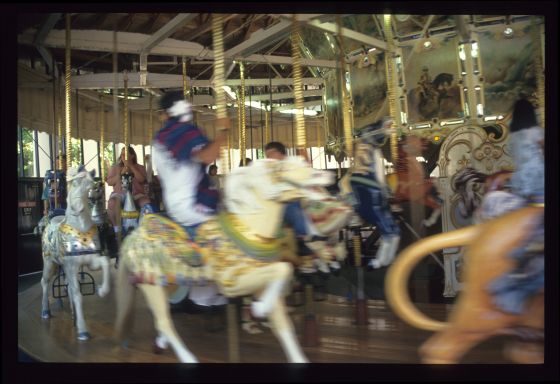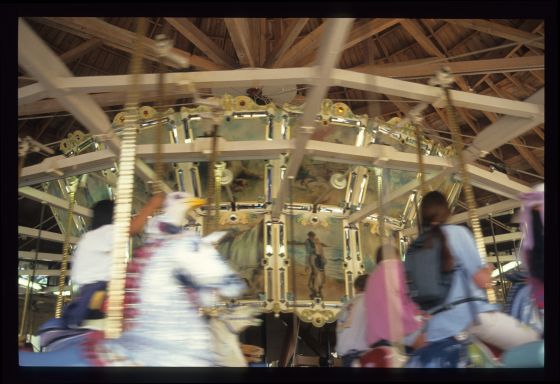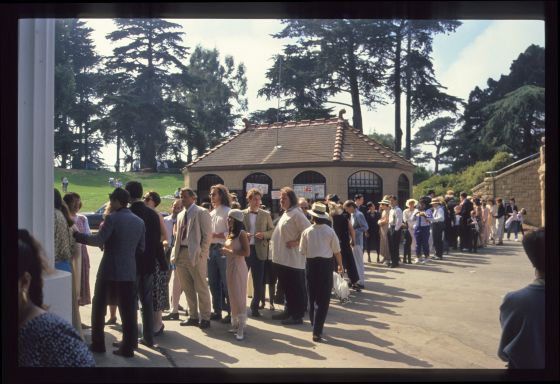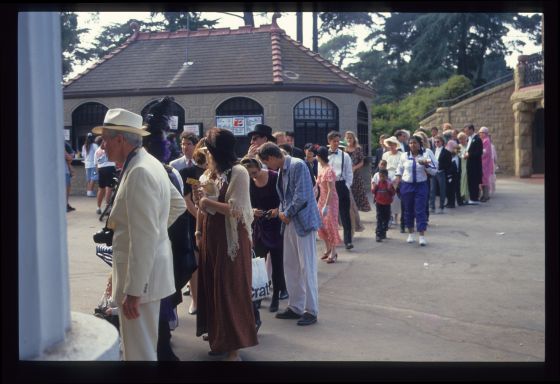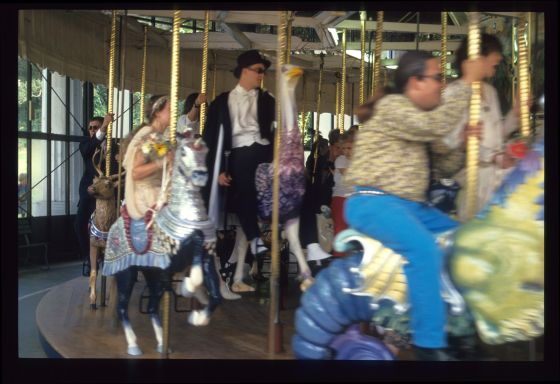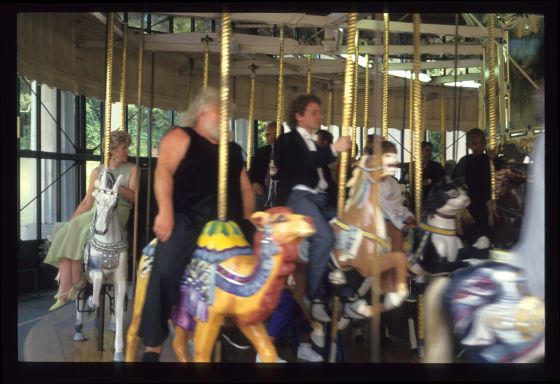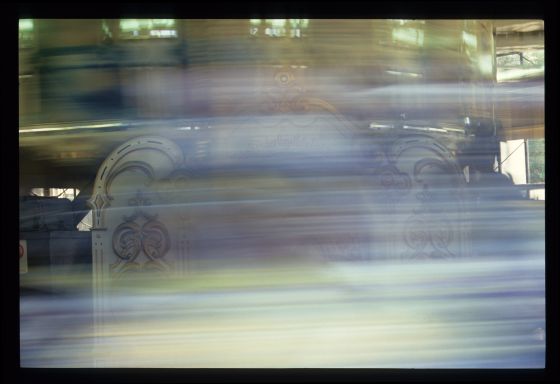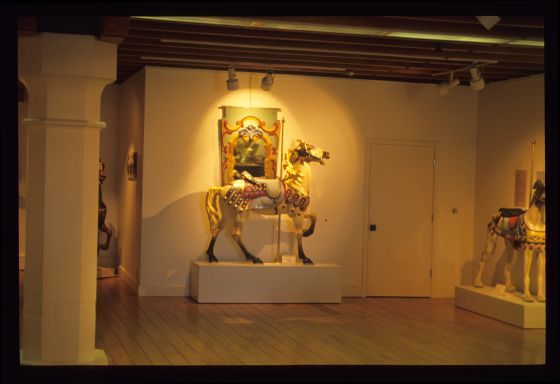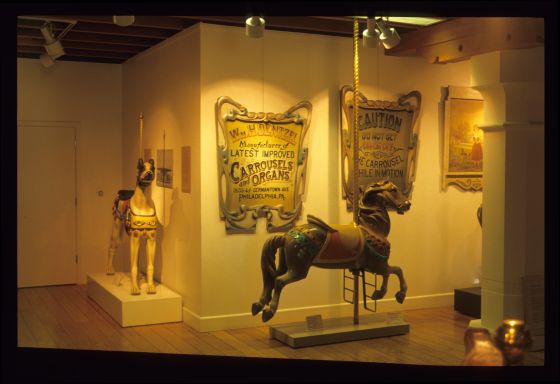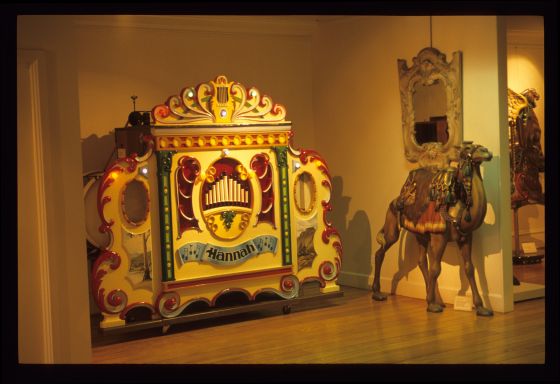Update 7.9.2024: On Youtube, "Eriks Gar." shows his restauration of one of these signals; and how they work inside. Must see!
From California we drove back to Oregon via Eureka and the Redwoods, where we came across the old Southern Pacific route over the Siskyous north of Medford.
Oregon, 1993
I don't remember how I knew that there would be a train coming ... Anyway, we resorted to waiting in Cow Creek Canyon ...
Cow Creek Canyon, 1993
Cow Creek Canyon, 1993
Cow Creek Canyon, 1993
Cow Creek Canyon, 1993
At some point our patience apparently ran out and we set off for the northern end of the valley near Riddle. There were still block semaphores along this route at that time - here are the two at "Milepost 539.6" (i.e. 868 km from San Francisco, the zero point of all Southern Pacific routes):
Blocksignale, MP 539.6 in der Nähe von Riddle, Oregon, 1993
Incidentally, the only nickel mine in the USA was located nearby, with its own connecting railroad. It was probably still in operation at the time, but I knew nothing about it and we drove past it. Its history is told in a thread on trainorders.com; some pictures are also available there (but only in small format without registration).
A little way back in the canyon, we came across the train (or it found us?) after all:
SP 4323 and 4403 at the north end of Cow Creek Canyon, 1993
SP 4323 and 4403 at the north end of Cow Creek Canyon, 1993
SP 4323 and 4403 at the north end of Cow Creek Canyon, 1993
SP 4323 and 4403 at the north end of Cow Creek Canyon, 1993
SP 4323 and 4403 at the north end of Cow Creek Canyon, 1993
A little further on I took this photograph of two more block signals:
Block signals at MP 541.6 near Riddle, Oregon, 1993
At the sawmill in Riddle, extensive switching had to be done. There were also two block signals there, and their wings were now moving up and down violently - to explain: The American block signal systems were and are normally completely independent of signal boxes and routes and switches - they are purely fully automatic block signals, i.e. they show stop when the block is occupied and clear when the block is unoccupied, regardless of how switches are positioned within the block. So when vehicles swing over the insulation point of the track circuits of the block signals, their arms also swing up and down. Therefore, in the following pictures you can see the arms of the signals in Riddle sometimes at the top, sometimes at the bottom, depending on which side wagons or locomotives are short-circuiting the rails or not.
The first picture shows the sawmill facilities on the left. The southbound block signal is showing stop because the train approaching from the south has already occupied the block:
Block signals at MP 544.4, Riddle, 1993
And here it comes:
SP 4323 and 4403, block signals, Riddle, 1993
SP 4323 and 4403 during switching, Riddle, 1993
SP 4323 and 4403 during switching, Riddle, 1993
Switching past the block signals, Riddle, 1993
Apparently the Southern Pacific intended to renew the block signals here - but I doubt that this was done before the sale to the Central Oregon and Pacific Railroad (CORP) at the end of 1994:
Block signal, Riddle, 1993
SP 4323 and 4403 during switching, Riddle, 1993
SP 4323 and 4403 during switching, Riddle, 1993
Block signals 5438 and 5439, Riddle, 1993
That's it for these old signals, which have long since disappeared.
For a few interesting links regarding this line:
- If you want to read a bold study on how one could go faster on this line, you can check out these considerations on some 50 pages on zierke.com which are peppered with lots of technical detail. The texts are in somewhat German English, but I learned a lot from them!
- And you should always take a look at the Wx4.org page on the Southern Pacific; among other things, there is a really comprehensive explanation of TT&TO dispatching with lots of anecdotes.
- Finally, there are some great photos of these semaphores on this page.
Translated partially with DeepL.com (free version)
